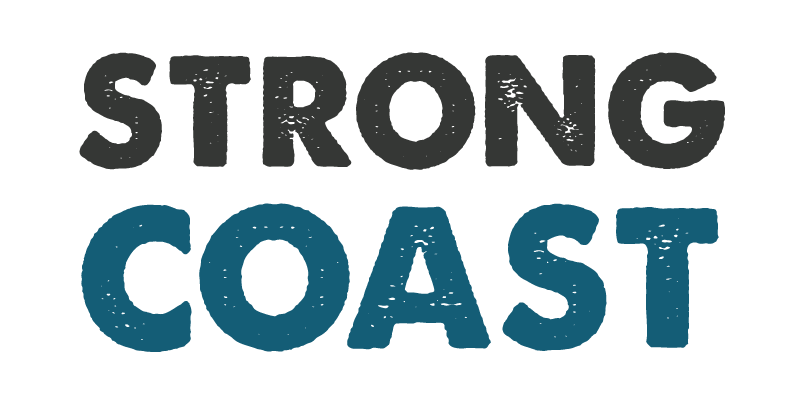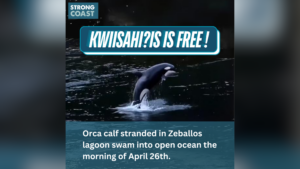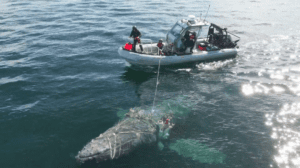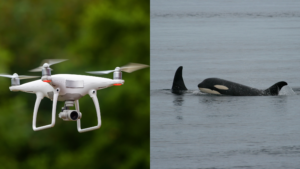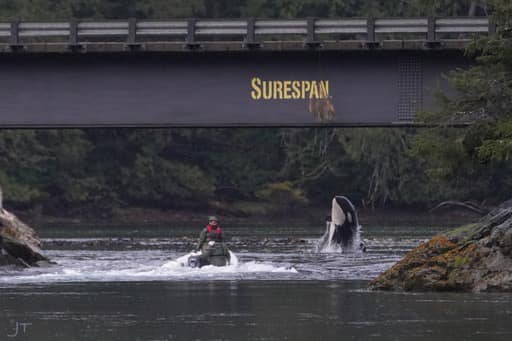
The escape of Brave Little Hunter, the two-year-old orca calf who became stranded in the Zeballos lagoon on March 23, has been the talk of the town for the past week. On April 27, the young orca successfully navigated her way from a remote tidal lagoon on Vancouver Island to the open ocean, marking an end to her month-long confinement. This event, occurring around 2:30 am after a lengthy day of rescue efforts, represents a significant moment for local First Nations and other rescuers, with the memory of her stranding, multiple rescue attempts, and eventual freedom expected to resonate for generations.
The young orca became stranded in the lagoon with her pregnant mother while they were out hunting. Her mother got beached on a sandbar and eventually drowned on her side as high tide came in, despite attempts by locals to flip her. Brave Little Hunter is the only known calf of her mother, Spong.
The evening before her escape, rescuers had been trying to use seal meat to coax her past the sandbar where her mother died and under the Zeballos causeway bridge so that she could exit the lagoon. As late-night fell, rescuers retreated for rest, while a few stayed back to monitor the orca. They witnessed her navigate these obstacles and swim into Esperanza Inlet. Observers noted an immediate change in her behaviour as she moved into the open waters, speeding up almost instantly. Her escape was described by Paul Cottrell, marine mammal coordinator for the Department of Fisheries and Oceans, as one of the best experiences of his life.
Those who witnessed this got into their boats to follow the orca, hoping to guide her into open waters. The DFO, as well as the Ehattesaht and Nuchatlaht First Nations, will continue to monitor the area in the hopes of finding Brave Little Hunter’s pod. The goal is for Brave Little Hunter to reunite with her pod without too much human intervention.
While stranded in the lagoon, Brave Little Hunter was fed by rescuers and local First Nations, helping her maintain her health. Marine mammal experts and scientists believe that the young orca has a good chance of reuniting with her pod and surviving in the open ocean.

A spokesperson from the Ehattesaht First Nation remarked that Brave Little Hunter’s poignant escape highlights the deep connection between the Indigenous communities and the marine environment and underscores their enduring commitment to wildlife conservation.
Ehattesaht First Nation Chief Simon John witnessed the calf’s escape, recalling his deceased daughter’s memory.
“Really, for me, today is the anniversary of my daughter’s death, so I’m just trying to maintain myself currently,” he said. “It’s been a tough process for me, withh the whale thing coming after 20 years today. It’s kind of significant to me. Nobody has to own it but me.”
To read more of this story, check out this article.
